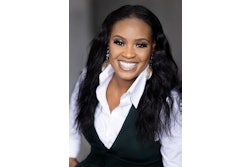 (Photo courtesy of Texas A&M University)
(Photo courtesy of Texas A&M University)When Texas A&M University launched its revised diversity plan in 2010, officials wanted to ensure that it would have an impact.
“We’ve had plans before, but this plan has more teeth to it and accountability,” says Dr. Christine Stanley, vice president and associate provost for diversity at Texas A&M. “A lot of what we had heard [with past plans] is, ‘Who is holding who accountable?’”
In addition to recruiting a diverse student body that more closely resembles the state’s multiracial, multicultural population, the plan seeks to improve the climate and equity at the top-tier research university known in Texas for its Corps of Cadets and iconic mascot Reveille, a collie.
Although everyone at the university is being held accountable, the system of accountability for diversity begins at the unit level, where leaders are expected to use data, including benchmarking, and studies to measure progress toward a more inclusive environment and submit annual reports to the President’s Council on Climate and Diversity. The Office for Diversity has a $1 million fund that is provided annually from the president and provost to reward units that are making progress in areas of the University Diversity Plan. Climate surveys measure students’ experiences on campus — including questions about perceptions based on their race and gender.
As a result, at a time when students of color at universities across the country are criticizing some administrators for not doing enough to create a welcoming climate for all, Texas A&M, which has an overall student enrollment of 59,000 on the main campus, is attempting to cultivate just that.
Today, the Hispanic student population is 19.4 percent, compared to 15.2 percent in fall 2011 at the main campus in College Station, about a two-hour drive from Houston. Over the same time period, the percentage of Asian students has increased from 4.5 percent to 5.6 percent. Black student enrollment, however, has lagged behind that of other students of color. They are 3.7 percent of the student body, up slightly from 3.4 percent in fall 2011.
The steady improvement in the recruitment of Hispanics, the largest minority in the state, has far outpaced that of African-Americans — a situation that Stanley, who received a master’s and doctorate from Texas A&M, describes as a “vexing issue.”
Much of the problem, she says, has to do with competition from other universities and improving how the university promotes its commitment to diversity. Standardized test scores, part of the admissions criteria at Texas A&M, present a barrier to admission, she says.
“As an example to illustrate high school readiness and provide some context, the [Texas Education Agency] in 2015 states the class of 2012 yielded a little over 2,100 African-American students in the state who met the test score criterion — an 1100 on the SAT or a 24 on the ACT [math and reading components],” Stanley says. “ This test score benchmark does not guarantee a student admission to Texas A&M but is an indicator of college readiness and the likelihood of being competitive in our admission process.”
Texas A&M officials have used information from interviews with Black students who did not attend the university to help increase African-American enrollment, with some success, she says. “For the past three years, we have implemented changes from our internal and external climate assessment data surveys and are now beginning to see an increase in the numbers of students admitted in our freshman class,” Stanley says, adding that the university will continue to monitor recruitment and retention efforts.
Statewide outreach custom-tailored
Texas A&M’s overall success with diversity can be attributed in large part to the university’s early outreach efforts to students of color.
More than a decade ago, Texas A&M officials established centers for prospective students to help increase the university’s brand recognition and to strengthen diversity, says Lynn Barnes, director of recruitment. Recruiters work one-on-one with students beginning in their freshman year, but recruitment efforts accelerate in their junior year, he notes.
“As part of that, we received funding early on to provide opportunity for students to visit campus, and we bring thousands each semester from across the state to experience the campus through custom-tailored programs,” Barnes says.
The experience gives them a good understanding of what it’s like to be an Aggie, or a member of the Texas A&M community, he says. Data collection has yielded some other insights about recruiting.
Scott McDonald, assistant vice president for academic services and director of admissions, says that officials have learned that recruitment doesn’t work without competitive financial aid packages. According to a university study, for Black students and their parents who did not choose the university, the “No. 1 reason was more competitive financial aid packages,” he says.
Based on the study, admissions officials send offers to students earlier than The University of Texas at Austin, another flagship state university and competitor for students.
Fifty-one percent of Black and Hispanic freshmen at Texas A&M are first-generation college students, which means financial aid and scholarships are central to recruitment.
As a large institution, Texas A&M “cannot do things small,” says Joe Pettibon, associate vice president for academic services.
The university offers two scholarships in particular to help recruit students from underrepresented populations. The Century Scholars program targets students at high schools that normally don’t send students to Texas A&M, while the Regents’ Scholars program assists first-generation college students from low-income backgrounds. There are nearly 600 scholars in the former program and almost 2,900 students in the latter program.
“We have to do things at a scale and size to be impactful,” Pettibon says. Research also shows the importance of connecting with students’ families and communities.
“One of the things that I found out is that, when you recruit African-American students, especially, you are recruiting their families as well,” Stanley says. To that end, she says recruiters have invited the families to interact with Black administrators to hear about their experiences as members of the Texas A&M community.
Stanley realizes that it’s also important to reach out to the communities from which the students come. She recalled a lunch meeting she and recruiters had with Black ministers in Dallas. “As a result of that lunch conversation,” Stanley says, “we learned a lot and had several of those ministers to help us recruit and organize tours to campus.”
Creating a unique experience
What happens when students arrive on campus is as important as the recruiting process, officials say.
As part of creating a welcoming environment, Texas A&M students and faculty have several clubs that reflect the interests of students of color. For example, there are organizations for Hispanic students, Vietnamese students and international students. Pettibon says that, if students can’t find an experience that suits them, they are encouraged to create their “own experience.” His point is that the university embraces the diverse experiences students can bring to the campus.
Texas A&M first opened its doors to African-Americans and women in 1963. Prior to that, it was an all-male military school. Hispanics have a long history at Texas A&M, dating back to the late nineteenth century. Unlike Blacks, they were never legally barred from attending predominantly White universities.
Pettibon recognizes that part of the university’s success is tied to understanding that many of the students it is now recruiting do not have a historical connection to the university and its traditions. But he said they could still have a future at Texas A&M University.
“We have such a unique experience here on campus and we focused a lot on that in our recruitment materials,” Pettibon says.
“We were sort of in love with ourselves … and we had to understand that we were asking them to fall in love with something they didn’t understand or know.”















